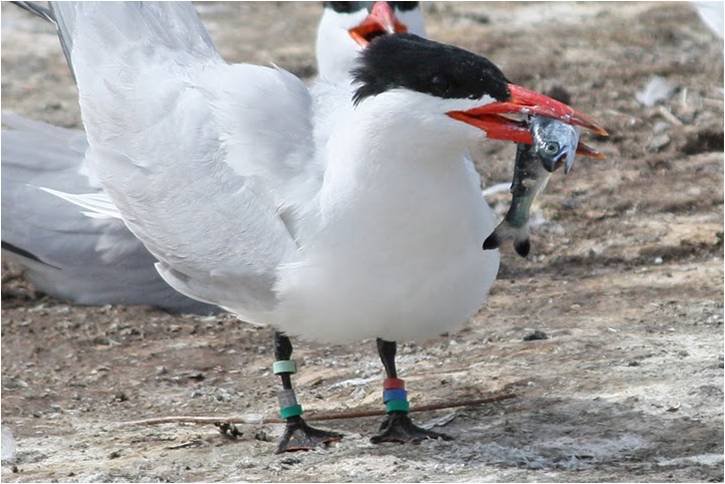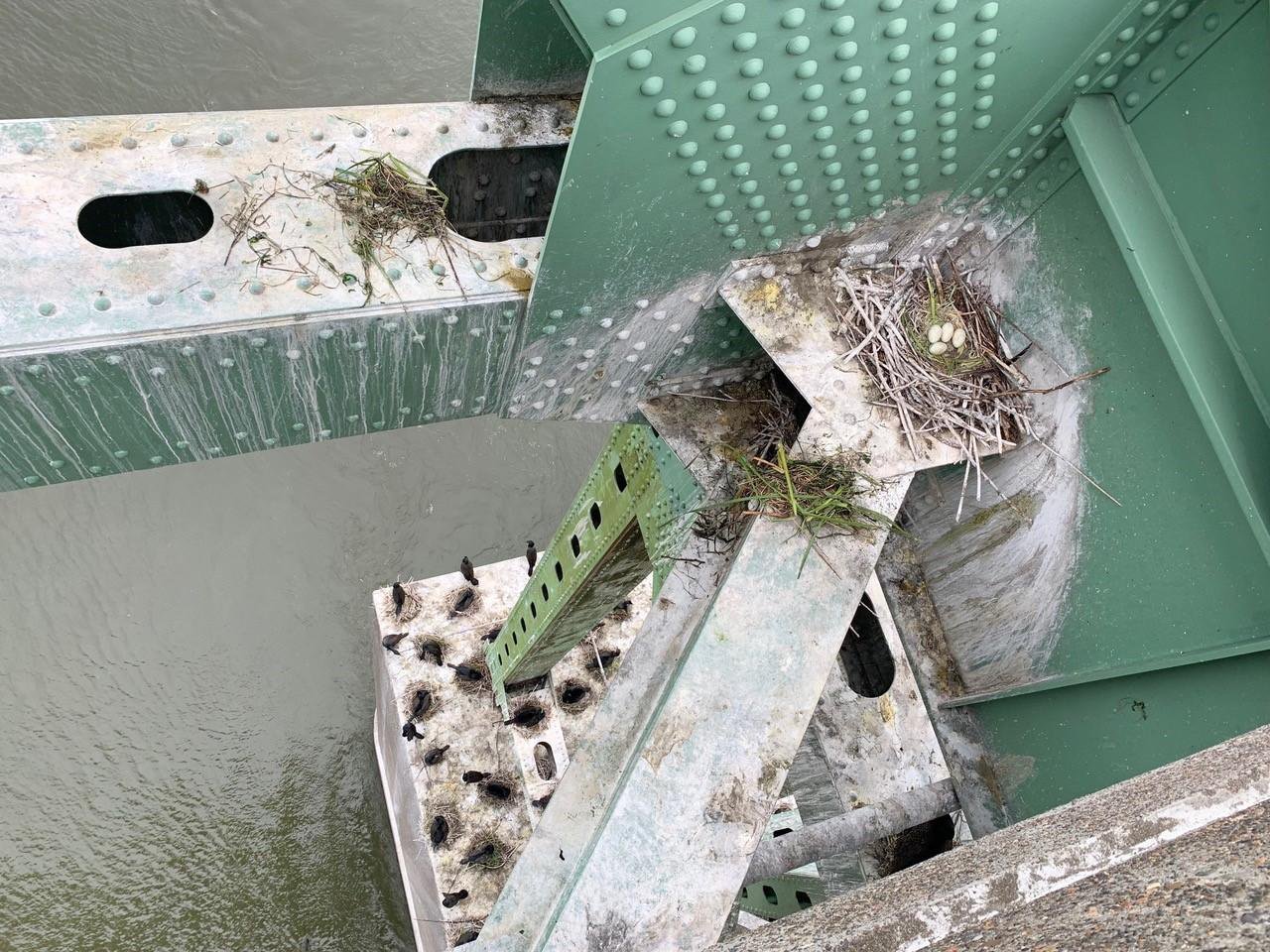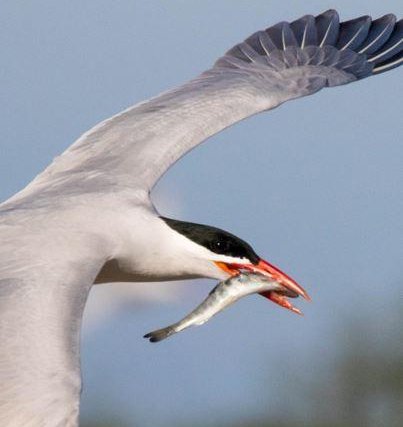Research Shows Hungry Terns and Cormorants Are Still a Problem, Particularly For Some Steelhead Smolts
- September 25, 2019
- John Harrison

Fish-eating birds continue to take a significant toll on juvenile salmon and steelhead near the confluence of the Snake and Columbia rivers, and in the Columbia River estuary, and the impacts are disturbing and surprising, two research scientists reported to the Council this month.
Dan Roby of Oregon State University and Allen Evans of RealTime Research of Bend, Oregon, reported that 11 years of research, 2008-19, suggests that more upper Columbia steelhead smolts, including those from the Snake River, were consumed by fish-eating birds – avian predators, they are called -- than died from all other mortality sources combined over that time, including hydropower dams. Additionally, while the number of fish-eating birds in the Columbia River estuary has been significantly reduced in some areas since 1997, when a regional effort began to curb their impact on migrating juvenile salmon and steelhead smolts, the population still is larger than fish managers would like.
And there is a new problem: an increasing number of birds in the estuary have abandoned a sand island created for their nesting in favor of nesting on the support structures of the Astoria-Megler bridge.
Dr. Dan Roby was the chief researcher in the effort to reduce the number of fish-eating Caspian terns and double-crested cormorants in the estuary and also upriver near the mouth of the Snake and middle Columbia. He said that when the program began, “we focused on quantifying impacts, and one thing we learned was that terns and cormorants nesting on one island, Rice, killed up to 25 million smolts annually. This equates to 19 percent of the migrating smolts.”
Roby said researchers “discovered to our surprise that avian predation is a major source of smolt mortality.” They also noticed that the spring and early summer migration of most juvenile salmon and steelhead in the Columbia coincided with the birds’ nesting season. So, parent birds were always searching for food for themselves and their chicks. By discouraging the birds from nesting on Rice Island upstream of Astoria and building new nesting habitat on East Sand Island closer to the mouth of the river, where the mix of juvenile fish has fewer salmon and more forage fish, and also by building alternative nesting sites elsewhere in Oregon and in California, the research project was able to reduce the number of nesting birds and also their consumption of salmon and steelhead. This reduced the population of terns in the Columbia River estuary from around 10,000 breeding pairs in 2008 to 3,800 breeding pairs today, and greatly reduced predation. Over that time, dissuading terns from nesting along the Columbia was difficult because drought made the alternative nesting sites unattractive to the birds. NOAA Fisheries, the federal agency that implements the Endangered Species Act for salmon and steelhead, would like the population to be no larger than 3,125 nesting pairs.
Evans said significant predation by terns and cormorants also continues in the middle Columbia River, near the confluence of the Snake and Columbia rivers. He and Roby are among four authors of a peer-reviewed paper in the September 2019 issue of Transactions of the American Fisheries Society that details their 11-year study of the impacts birds have on Upper Columbia steelhead, including those in the Snake River. Evans told the Council, “these fish populations, particularly those that are in the Snake River and Upper Columbia River, don’t just have to navigate past one bird colony, they have to navigate past multiple bird colonies. For Upper Columbia River steelhead, they have to get through the foraging range of 14 different bird colonies, and the research there suggests that birds consume more smolts during that migration period than all other mortality sources combined. So, more fish are dying from birds than from passing through the dams, or are consumed by pikeminow or are dying from disease - it’s the dominant mortality factor for some of these groups, and at least for me, that’s surprising.”
And there is another problem: the proliferation of double-crested cormorants, which also nested on East Sand Island and also are voracious predators of juvenile salmon and steelhead. Those birds, which lack the federal protection afforded Caspian terns, also numbered in the thousands of breeding pairs – an estimated 14,900 -- but their numbers declined as researchers reduced the size of their nesting habitat, killed more than 5,000 of them and spread oil on eggs in about 7,000 nests over time to prevent the eggs from hatching.

Today, having mostly abandoned East Sand Island, the birds have found a convenient alternative site nearby to nest: the Astoria-Megler Bridge.
“This used to be a small colony of about 300 pairs but now it is over 3,500, which is enormous,” Roby said. “It is likely to get larger; the bridge could accommodate up to 5,000 pairs. The birds also are nesting farther upriver, turning their attention to smolts. This is a problem for fishery managers and also for the Oregon Department of Transportation, which needs to do something about the large colony that is nesting on their infrastructure.”

Upstream on the Columbia River, above McNary Dam and in central Washington, the research project reduced Caspian tern nesting habitat on Crescent and Goose islands in the Columbia in the hope that birds would take advantage of new habitat created in southeastern Oregon and northern California, areas easily within the terns’ long-distance flight migrations. Terns nesting on Crescent and Goose islands once consumed annually from 5-30 percent of migrating smolts from some ESA-listed steelhead populations. Reducing the nesting habitat on the two islands resulted in a 44-percent decline in the breeding population. While terns have not nested on either island in at least four years, they continue to try, many relocating to the nearby Blalock Islands, federally protected bird habitat where there are no management actions directed at terns. And clearly, birds continue to have a huge impact on smolts, particularly Upper Columbia and Snake River steelhead, and likely other Endangered Species Act-listed salmon species.
Roby described the efforts to relocate the terns “as a bit like playing whack-a-mole” and noted that terns evidently have “a high fidelity” for nesting near or on the Columbia River. He added, “the impacts on smolts remain significant, particularly on steelhead, and particularly in years when flows are low.”
He said all of this is both good and bad news – good because the Caspian tern population in the estuary no longer is the largest in the world, as it was in 2008, but bad because terns still have a big impact on migrating smolts, and also because the cormorant population is growing and has largely relocated to the bridge. No one yet is monitoring the impact of the bridge nesters on salmon and steelhead smolts.



